Discovery of 24 bronze statues preserved in a Tuscan spa for 2,300 years

Three heads of statues discovered in the baths.
The recent discovery in Tuscany of bronze statues, buried for more than two millennia, in thermal baths, marks a turning point in the study of Etruscan and Roman history. These artifacts, witnesses to the coexistence of Etruscan and Roman cultures, shed new light on their intertwined interactions and religious practices. This discovery, of inestimable value to archaeology, enriches our understanding of antiquity and underlines the importance of the conservation of cultural heritage.
Tuscany, an emblematic region of Italy, for its picturesque landscapes or its Renaissance artistic heritage, is the site of a major archaeological discovery. In San Casciano dei Bagni, a small village perched in the hills of the province of Siena, recent excavations have revealed more than twenty bronze statues dating back 2,300 years, immersed in ancient thermal baths. This exceptional find, revealed by a press release from the Italian Ministry of Culture , reveals valuable details about the historical and cultural transition of the region between Etruscans and Romans. It promises to redefine our understanding and conception of Mediterranean antiquity and its civilizations.
A bronze heritage preserved by water
The statues, recently discovered in Tuscany, offer a unique window into a pivotal era in the region's history. Immersed for centuries in thermal waters, these works have been preserved in remarkable condition. This is due to the anoxic conditions created by mud and water. They prevented corrosion of the bronze of the statues. Their exceptional state of conservation allows us to fully appreciate the artistic finesse and richness of details.
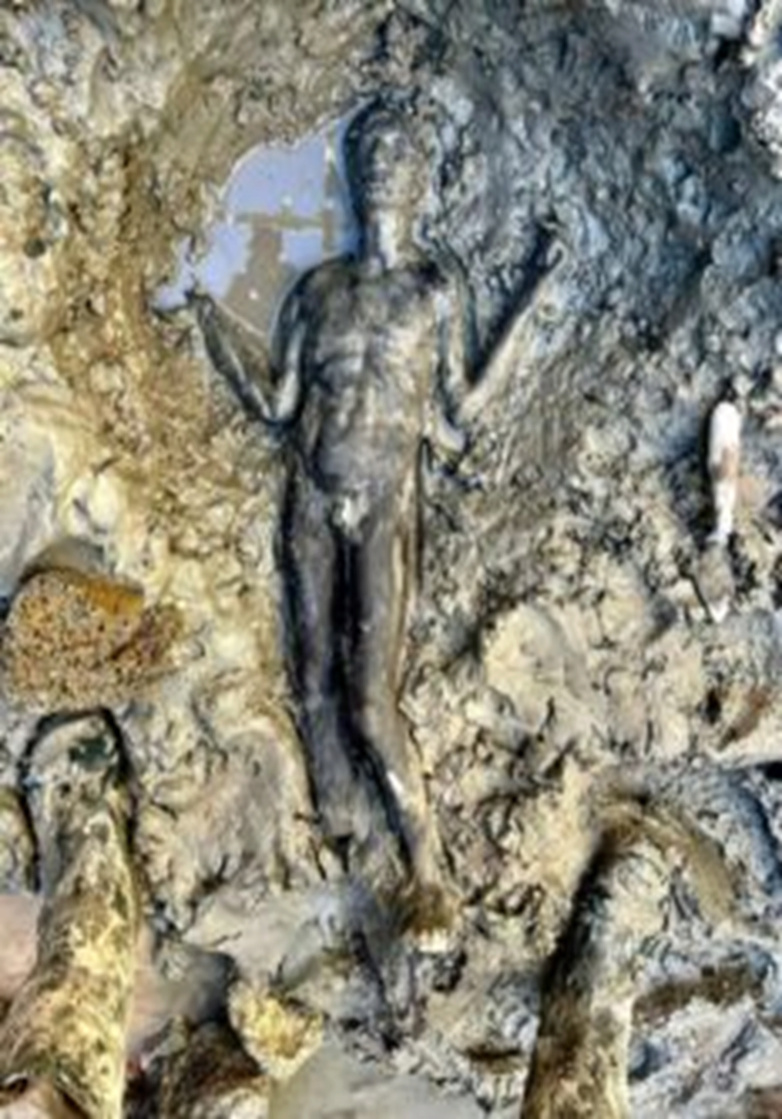
A statue, perfectly preserved by the mud.
These statues embody the tumultuous transition from Etruscan domination to the Roman Empire. It is a period marked by intense conflicts and profound cultural upheavals. The statues date from the 2nd century BCE and the 1st century CE. They represent mythological figures, such as Hygieia, the goddess of health, and Apollo, the god of music and healing. They are also in the image of other deities venerated in the Greco-Roman pantheon.
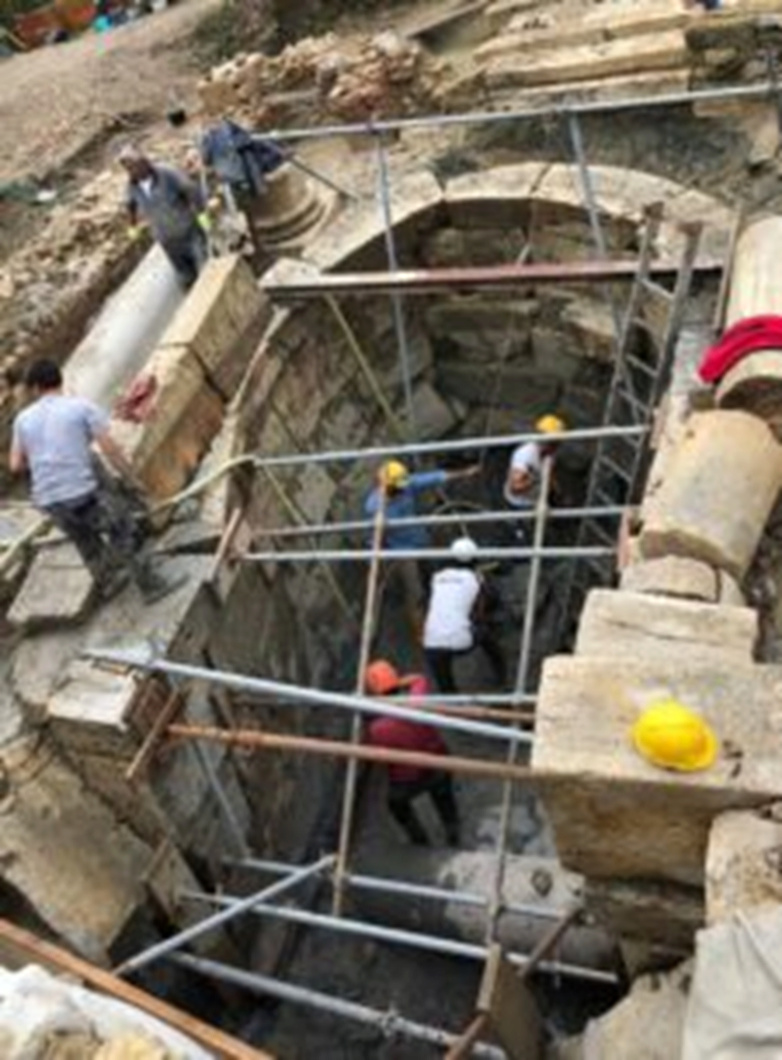
Excavation site.
The site of their discovery was a place of healing, meeting of cultures and medical knowledge. Even today, the springs of San Casciano dei Bagni are visited for their therapeutic properties.
Statues, testimony to Roman and Etruscan artistic history
Professor Jacopo Tabolli, head of these excavations, highlights the importance of these statues for the history of ancient art. According to him, these discoveries are not just valuable artifacts. They represent a crucial milestone in our understanding of ancient art and culture.
These statues, through their style and iconography, bear witness to a cultural mix that has until now been underestimated or poorly understood in historical studies. The Etruscan and Roman cultures did not just coexist, as previously mentioned. The deities represented in these statues, and the artistic styles employed, show a fusion of Etruscan and Roman influences.
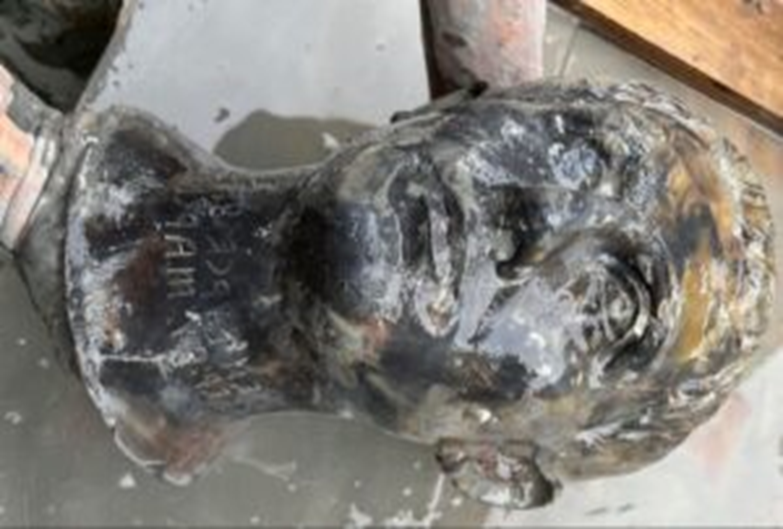
Statue head showing inscriptions around the neck.
In addition, some of these bronze statues bear inscriptions in Latin and Etruscan. They reveal links with renowned Etruscan families. These inscriptions are crucial to understanding the social and political networks of the time. Especially since for researchers being made in bronze rather than terracotta is unusually ostentatious for the time.
Professor Tabolli says the inscriptions found there suggest practices of veneration and devotion shared between Etruscans and Romans.
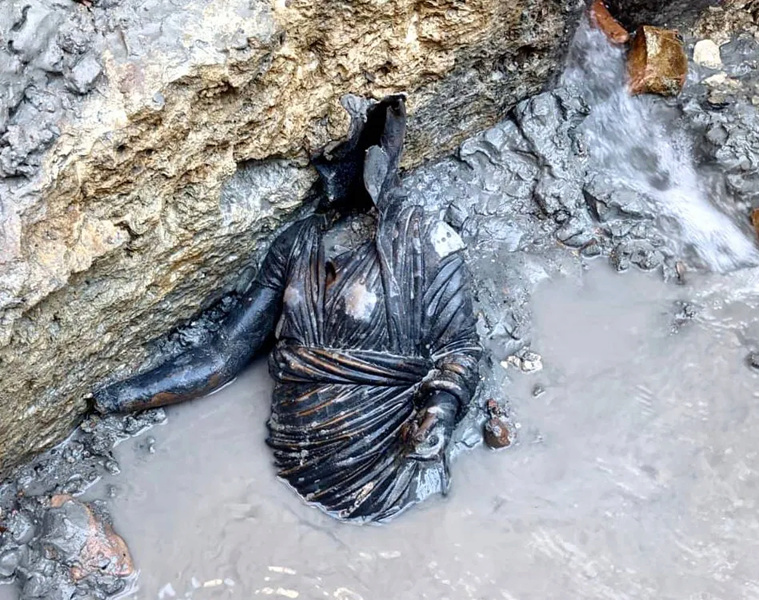
Towards a new understanding of Roman and Etruscan antiquity
Archaeologists hail the discovery of the bronze statues at San Casciano dei Bagni as one of the most significant in Mediterranean archeology since the discovery of the famous Riace Bronzes in the 1970s.
These statues allow researchers to explore in more depth the beliefs, rituals and artistic expressions that were prevalent in the region during this time. Furthermore, these discoveries allow us to re-evaluate the interaction between the Etruscans and the Romans, traditionally seen in terms of conflicts and conquests.
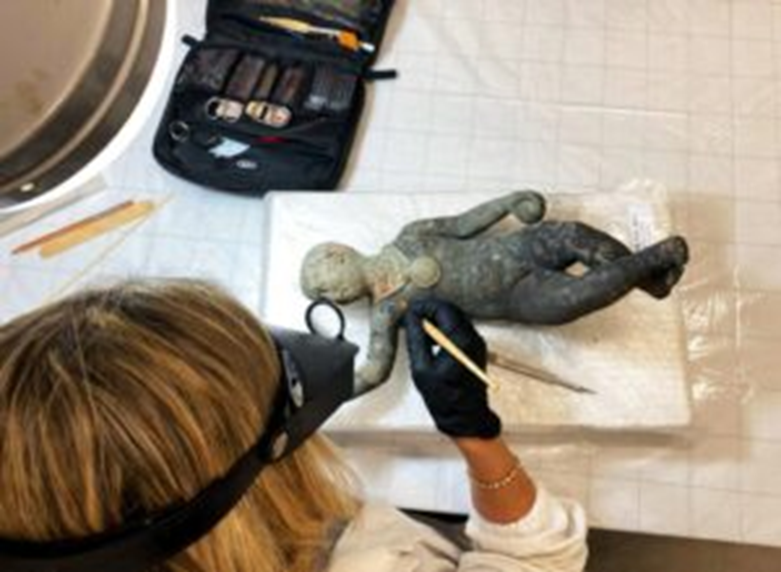
A small statue of a child, probably used as a votive offering.
The bronze statues show that, despite political and military tensions, there was a much richer and more complex level of exchange and mutual influence. This challenges traditional perspectives on the relationships between these peoples. Researchers have a new understanding of how cultural and religious identities became intertwined in antiquity. The statues invite us to rethink the historical and cultural dynamics of the ancient Mediterranean.
A strong need for conservation of bronze statues and heritage
The archaeological discovery in San Casciano dei Bagni is not limited to bronze statues. It also includes thousands of coins and a multitude of other objects of great historical value. The decision to display them in a new, purpose-built museum in San Casciano is a major initiative, supported by the Italian Ministry of Culture. This project aims to achieve several objectives.
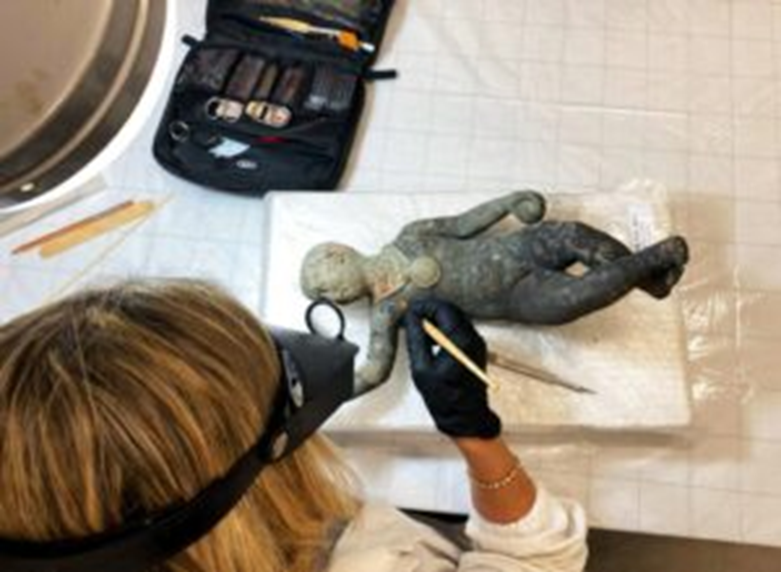
First, the museum will serve as a sanctuary for the preservation of these treasures. By sheltering them in a controlled environment, we ensure their protection against the elements and the risk of deterioration. This will also allow researchers and historians to study these objects in more depth.
Next, this museum will play a role in revitalizing tourism and culture in the region and beyond. This will consequently help to boost the local economy.
Additionally, the museum will provide an educational and cultural platform for residents and visitors. Through exhibitions, workshops, and educational programs, it will provide a source of knowledge and inspiration. A connection between residents and the history of their region will ensure the conservation of cultural heritage.
Source : Italy's Ministry of Culture

